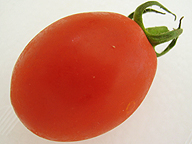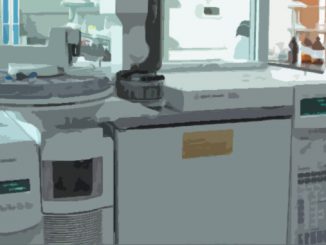
近頃、米国食品医薬品局(FDA)は、その食品部門のホームページにある通知を出した。それは、ある企業が一つの新しい甘味料に関して、食品に使用するに当たってその甘味料は「GRAS(generally recognized as safe)である。すなわち、一般に安全であると認められる」という結論に達したというものである。FDAはその通知の中で、その企業が「結論に達した」であるとかその企業は「FDAに通知した」あるいは「情報を提供した」という表現を使っているが、FDA自身がその物質の安全使用に関して結論を下したということは言っていない。FDAは単に「現時点においてこれ以上疑問の余地なし」と言っているのみだ。活動家諸氏は、バイテク食品に関するFDAの通知から同様な文言を取り挙げ、FDAは責任を果たしていないと言うのだが、FDAの回答の拠り所は、謎めいているものの現実的なGRASと称される米国食品法規にある。
Recently FDA issued a notice on the FDA food web page that a firm had concluded that a new sweetener is GRAS (generally recognized as safe) for use in food. In the notice, FDA used language such as the firm “concluded,” the firm “informs FDA,” the firm “provided information,” but FDA does not state that the agency has made a conclusion regarding the safe use of the substance; FDA merely says that it has “no further questions at this time.” Activists have pointed to similar language in FDA’s notices for biotech foods, suggesting that FDA is not acting responsibly. The explanation for FDA’s response lies in an enigmatic but practical provision of food law in the United States referred to as GRAS.
1970年代末、私は職探しをしていた。そんな折、FDA食品安全・応用栄養センターの部長から連絡を受けた。電話で私が理解したところによると、FDAの「grass(草)」プログラムの仕事に興味があるかと訊いてきた。食品法についてほとんど何も知らなかった私は、彼は「草っぱ」と言ったが (まさかマリファナの類ではなかろうことから)、ムギとか何かその種類の食品について言っているのだろうと思っていた。
そんなことから、私はFDAのGRASと目される物質の安全性を評価する部署で働くことになった。58年、米国議会は連邦食品・医薬品・化粧品法(FFDCA)を改正し、それによって、新規「食品添加物」に市販前承認が義務付けられた。食品添加物の承認には、科学的な試験と厳しい安全基準である「無害であるという筋の通った確実性」を証明するための諸々のデータを要した。その改正の時点でも既に、多くの物質は害なく食品に使用されてきていた(例えば、酢、塩、スパイス、食品用酵素、辛子、醤油などなど)。
米国議会は、そういった物質についてまで科学的試験や市販前承認を課そうと意図していたわけではなかった。従って、58年より先だってずっと安全に使われてきたという歴史ある物質については例外を設けた。また、58年以降に開発された物質についても、資格のある専門家が食品に使用するに当って安全と認めればそれも例外とすることとした。
要するに、GRAS規定は、58年より先だってずっと安全に食品に使用されてきたという過去歴かあるいは科学的手続きのいずれかに基づいて、一般的に安全と認められる物質の市販前審査を免除するというものだ。GRASの判定は、食品添加物に求められるものと同量・同質のデータに裏付けられていなければならない。食品添加物とGRAS判定の違いは、GRAS資格を有するには一般に承認されていることが必要となることである。
「一般承認」とは、ある食品物質がGRASの資格を得るに当たってその裏付けとなるデータや資料が公表されるか、さもなければ資格を有する専門家が評価できるよう公開されていなければならないということを意味する。法廷での判決は、その考え方を確たるものとしてきた。さらに、GRAS資格とは、どういうふうに食品に使われるのかということが対象となる。
例えば、最近のGRASであることを伝える通達でFDAはこう述べている。その企業はステビア草由来の甘味料、Rebaudioside A、はGRASであると結論付けたが、その通達はステビア草から抽出され得るそのほかの物質には適用されない、あるいは、その通達に書かれていない使用法については適用されないと。最終的に、米国議会は、GRASの判定に当たって、FDAが単独の決定者であるべき特定はしなかった。FDAがGRASの決定を下すこともあれば、業界などの資格を有する専門家が決定を下すこともある。自らのGRAS決定をFDAにも「容認して」もらいたいという企業のために、FDAは何年にも渡って、請願申請という方法で「容認する」ための手続きをとってきた。しかし、その手続きはやっかいで、物質が安全であるという企業の判断と重複するものであり、また資源集約的でもあった。
FDAが常に認識していることは、公衆衛生を護る上で最も影響があることに資源を振り向けるということである。GRASやバイテク食品は重大な健康問題を引き起こしてはいない。特に食物由来の感染症と比べればなおさらだ。とはいえ、FDAにとっても業界にとっても食品に使用される物質の安全性について同一の判断を持っていることは重要である。
組換え体植物由来の食品の政策を立てていたのと同時期、FDAは新しい食品包装材の新規の簡易手続きも策定していた。現在のGRAS届出プログラムのモデルができあがったのは、この包装材(間接食品添加物)の届け出手続きとバイテク作物由来の食品の諮問手続きの成功によるところが大きい。
92年バイテク作物政策で、遺伝子導入の結果として食品に含まれる物質および発現は食品添加物であり、その物質がGRASでない限り市販前承認を要するとFDAは断言した。そこで、Calgene社はFDAに、選択マーカーでありFlavr Savrトマトにおけるただ1つの新しい物質であったカナマイシン耐性の酵素を食品添加物として規制するよう要請してきた。それは、GRAS資格についての議論を避け、その酵素が食品添加物の安全基準を満たしていることを立証するためであった。Calgene社は、初のバイテク食品に対する消費者の懸念に対応するには、FDAの後ろ盾が必要だと考えていたのだ。
食品添加物承認手続きによって、FDAはその新型トマト中の酵素を審査し承認することとなった。Calgene社の請願によって、FDAはカナマイシン耐性酵素を食品添加物としてトマト、トウモロコシ、ワタに使用することを承認した。今日、カナマイシン耐性酵素は、企業のGRASであるという決定に基づきそのほかの作物にも同様に使われている。FDAはそのような決定に異議を唱えたりしない。なぜなら、カナマイシン耐性についてGRAS資格を裏付ける公開データが十二分にあると確信しているからだ。
同様にFDAは、その他新しくそして農薬ではない物質が食用作物に利用されるに当たってそれがGRASであるという企業の決定を受け入れてきた(注:米国では、農薬は米国環境保護庁(EPA)によって規制されている。例えば、B.t.)。今までのところ、それら物質(主にたんぱく質)は、食品の成分として安全に消費されてきた物質と同様のものだ。しかしながら、GRAS資格とする根拠が十分でない場合、FDAは、食品に使われる作物由来の新しい物質は食品添加物として承認を要すると断言することができる。
バイテク作物について企業がFDAに諮問することの大きな法的疑問は、新しい物質は食品添加物として規制を要するか否かという判断について熟考を余儀なくさせる。諮問は、新規食品の成分とその他安全性や栄養面での問題を扱う。諮問は任意だが、FDAは企業に新たなバイテク作物については諮問するよう奨励している。そして企業は今までのところ市場導入を図るすべての新バイテク品種について諮問をしてきた。食品添加物の決定とは違って、FDAは安全性に関する決定を下さないし、あるいは、その食品や食物質を承認するというわけではない。FDAの科学者たちがしているのは、食品の安全性に関連したすべての問題が十分に解決されているかを確実なものとすることだ。
その物質を使用するについてそれは安全であると納得している限り、FDAはGRASあるいはバイテクについて公式文書を企業向けに発行したりしない。FDAのバイテク食品に関する「不承認」が十分根拠のあることであるか否かは誰がどのように判断するのだろうか。今まで、数カ国政府がFDAの審査したのと同じバイテク食品を審査してきた。多くの場合、さらに多くのデータが求められが、それら食品は承認されている。さらに多くのデータをというのは、安全性を追及するというよりも、規制当局者が安心感を得るためなのだろう。
規制者にとって最も難しい問題の1つは、食の安全性に関連した問題か、あるいは単に科学的な興味なのかを見極めること、そしてデータ要求については該当するデータのみを求めることである。FDAのGRASやバイテクに関する手続きは世界でも異色のものであり、それは執行権限に支えられた強い規制の枠組みに基づいている。GRASやバイテク手続きは「承認」を与えるために作られたのではない。とはいえ、業界とFDAの間で科学的情報を交換する1つの方法であり人々の健康保護において実績を有しているのだ。
In the late 1970s when I was job hunting, I was contacted by a manager at FDA’s Center for Food Safety and Applied Nutrition who asked, as I understood over the telephone, if I was interested in working in FDA’s “grass” program. I knew little about food law, so I thought he might be referring to wheat or similar food products (not likely something that is smoked!).
I joined FDA’s office that was responsible for reviewing the safety of substances that were considered to be GRAS. In 1958 the Congress had amended the Federal Food, Drug, and Cosmetic Act (FFDCA) to require premarket approval for new “food additives.” Approval for food additives required scientific tests and other information to establish that there is “a reasonable certainty of no harm,” a rigorous safety standard. At the time of the amendment, many substances had been used in food without any evidence of harm. (e.g., vinegar, salt, spices, food enzymes, mustard, soy sauce, and many more)
The Congress did not intend for such substances to undergo scientific testing and premarket clearance. Therefore, an exemption was established for substances that have a history of safe use prior to 1958. The Congress also provided an exemption for substances developed after 1958 that qualified experts would agree are safe for use in food.
Thus the GRAS provision exempts from premarket review substances that are generally recognized as safe for use in food, based either on a history of safe use in food prior to 1958 or based on scientific procedures. A GRAS determination must be supported by the same quantity and quality of data that would be required for a food additive; the difference between a food additive and a GRAS determination is the general recognition requirement for GRAS status.
Court decisions have solidified the concept that “general recognition” means data and information that supports GRAS status of a food substance must be published or otherwise publically available for qualified experts to evaluate. Additionally, GRAS status is based on the intended use in food.
For example, in the recent GRAS notice, FDA pointed out that the firm had concluded that the sweetener, rebaudioside A, derived from the Stevia plant is GRAS, but that the current notice does not apply to other substances that might be obtained from the Stevia plant, or to uses that are not addressed in the notice. Finally, the Congress did not specify that FDA should be the sole arbitrator for GRAS determinations. FDA may make a GRAS determination, but qualified experts in industry or elsewhere are equally eligible.
For many years, FDA used a petition process by which the agency would “affirm” a company’s GRAS determination, but the process was cumbersome, duplicative of a firm’s decision that a substance is safe, and resource intensive. FDA is always cognizant of using its resources for the most impact on public health protection. GRAS and biotech foods do not present serious health issues, especially when compared to food borne infection. Nevertheless, it is important to FDA and to the industry to have concurrence on decisions regarding the safety of substances used in food. Most firms prefer to follow the voluntary GRAS program, instead of risking a challenge by FDA to their GRAS decision.
When FDA was developing its policy for foods derived from genetically engineered plants, the Agency was also developing a new, simplified process for new food packaging materials. In large part, it was the success of the notification process for packaging materials (indirect food additives) and the consultation process for foods derived from biotech crops that provided a model for the current GRAS notification program.
In its 1992 policy on biotech crops, FDA asserted that a substance present in food as a consequence of gene transfer and expression was a food additive and would require premarket approval, unless the substance was GRAS. Thus, Calgene, Inc. requested that FDA regulate the enzyme for kanamycin resistance, the selectable marker and the only new substance in the Flavr Savr tomato, as a food additive to avoid a debate about its GRAS status and to establish that the enzyme meets the safety standard of a food additive. The firm felt it needed FDA’s backing for the first biotech food to meet consumer concern.
The food additive process provided a mechanism for FDA to review and approve the enzyme used in the new tomato. FDA approved the kanamycin resistance enzyme for use in tomatoes, corn and cotton (the crops for which the firm petitioned) as a food additive. Today, kanamycin resistance is used in other crops as well based on a firm’s decision that its use is GRAS. FDA has not challenged such decisions because the agency believes that there is now a body of sufficient, published data to support GRAS status for kanamycin resistance.
Similarly, FDA has accepted companies’ decisions that other new, non-pesticide substances are GRAS for use in food crops (note: pesticides are regulated by EPA; e.g. B.t.). To date such substances (mostly proteins) are similar to substances that have been safely consumed as components of food. However, FDA can assert that a new substance in a food derived from a crop requires approval as a food additive if the agency does not find that there is a sufficient basis for GRAS status.
The major legal question on which firm’s consult with FDA on biotech crops revolves on the decision of whether a new substance requires regulation as a food additive. Consultations also address the composition of the new food and other safety and nutritional issues. Consultations are voluntary, though FDA strongly encourages firms to consult with the agency on new biotech crops, and firms have consulted to date on all new biotech varieties that firms have intended to market. Unlike a food additive decision, FDA does not make a safety decision or approve the food or food substance. FDA scientists do ensure that all questions that are relevant to food safety have been adequately resolved.
FDA does not issue a GRAS or biotech letter to a firm unless FDA is satisfied that the use of the substance is safe. How can one judge whether FDA’s “non-approvals” for biotech foods are adequate? To date, several governments have reviewed the same biotech foods that FDA reviewed, often requiring more data, but still approving the foods. More data may give regulators a feeling of comfort without any real benefit relative to safety.
One of the hardest questions for a regulator is to distinguish between issues that are relevant to food safety and those of mere scientific interest and to focus data requirements on the pertinent issues. FDA’s processes for GRAS and biotech are unique among governments and are based on a strong regulatory framework backed by enforcement authority. The GRAS and biotech food processes are not designed to give “approval,” but they do provide a means for exchange of scientific information between the industry and FDA and have a proven track record of protecting public health.
※このコラムは「FoodScience」(日経BP社)で発表され、同サイト閉鎖後に筆者の了解を得て「FoodWatchJapan」で無償公開しているものです。




